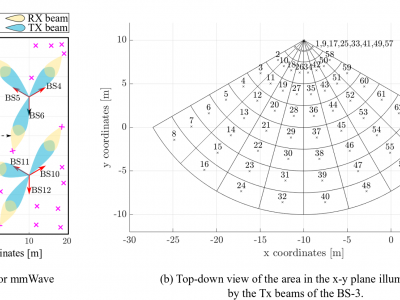Signal Processing

Automotive millimeter wave Frequency Modulated Continuous Wave radars are finding widespread use in various fields. At times, the hardware specifications of commercial-off-the-shelf products prohibit the use of these products for other diverse radar measurements. More often, velocity ambiguity results when an attempt is made to measure the velocity of a high-speed target with a radar that is not designed for that purpose in the first place.
- Categories:
 418 Views
418 Views
Data is the database for synthetic and real field data experiments, including:ds01.mat is the synthetic data of a single-cubiod-source case which can be opened by Matlab software. ds02.mat is the synthetic data of a two-cubiod-source case which can be opened by Matlab software. ds03.csv is the real field data of the ore-concentrated area from Zhen’an, Qinling, China.
- Categories:
 42 Views
42 ViewsThe dataset consists of training and test data and label matrices for single-pixel compressive DoA estimation for mmWave metasurface. The dataset will be uploaded soon. Currently, a small part of the dataset can be accessed through this repository. For detailed information, please visit Graph Attention Network Based Single-Pixel Compressive Direction of Arrival Estimation through https://arxiv.org/abs/2109.05466
- Categories:
 738 Views
738 ViewsThis dataset includes the measured Downlink (DL) signal-to-noise ratios (SNRs) at the User Equipments (UEs), adopting one of the beams of the beamforming codebook employed at the Base Stations (BSs). First, we configured a system-level simulator that implements the most recent Third Generation Partnership Project (3GPP) 3D Indoor channel models and the geometric blockage Model-B to simulate an indoor network deployment of BSs and UEs adopting Uniform Planar Arrays (UPAs) and a codebook based transmission.
- Categories:
 666 Views
666 Views
A deep sea video quality dataset with their subjective quality scores.
- Categories:
 314 Views
314 ViewsThe dataset contains the path loss measurements obtained with a LoRa (868 MHz) transmitting radio and five receivers. The receivers move in a search area covering both outdoor and indoor areas wherein a double-slope path loss is experienced. The data can be used to test range-based localization algorithm through the received signal strength.
- Categories:
 499 Views
499 Views
In this appendix, the tested implementation in Matlab of our 2D-TDOA localization algorithm is given for the easier repetition of the obtained results and the future hardware implementation, due to the complexity of the formulas (25)-(31).
- Categories:
 492 Views
492 Views
Using Wi-Fi IEEE 802.11 standard, radio frequency waves are mainly used for communication on various devices such as mobile phones, laptops, and smart televisions. Apart from communication applications, the recent research in wireless technology has turned Wi-Fi into other exploration possibilities such as human activity recognition (HAR). HAR is a field of study that aims to predict motion and movement made by a person or even several people.
- Categories:
 4724 Views
4724 Views
The given Dataset is record of different group people either healthy subjects or subclinical cardiovascular disease(CVD) with history coronary heart disease or hypertension for superficial body features, original photoplethysmography imaging(iPPG) signal and characteristics.
The main purpose of the dataset is to understand the relationship between CVD and high-dimensional ippg characteristics.
- Categories:
 793 Views
793 Views


